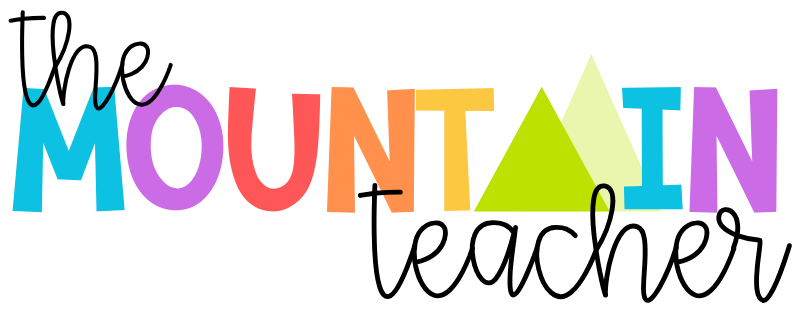How to Teach Informative Writing in 2nd Grade with Spectacular Results
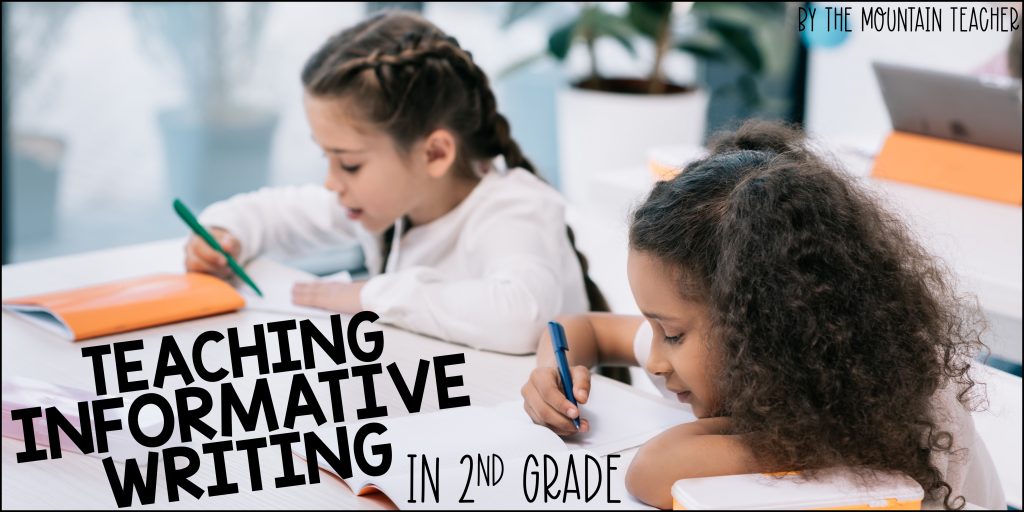
Not going to lie.. informative writing can be daunting. Which makes teaching informative writing that much more daunting. However, it doesn’t have to be a battle and it can even be FUN!
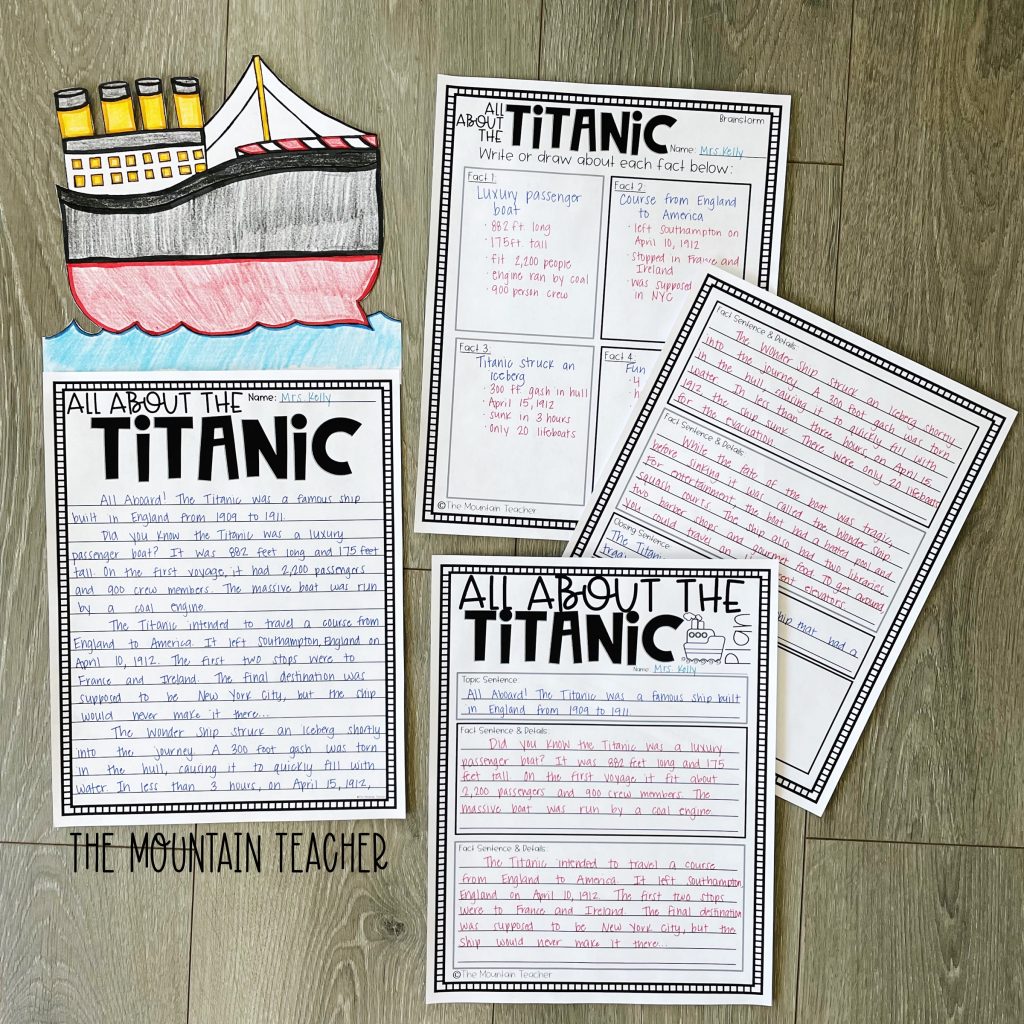
Important Concepts:
Students need to learn how to research facts about a topic and restate those facts in their own words. Both parts of that concept can be difficult.
Research might be hard with students who are just learning to read. A great way to combat that is to do research as a class or in small groups.
Restating facts in students’ own words is an easier concept to teach. This can be done with lots of modeling and guided practice.
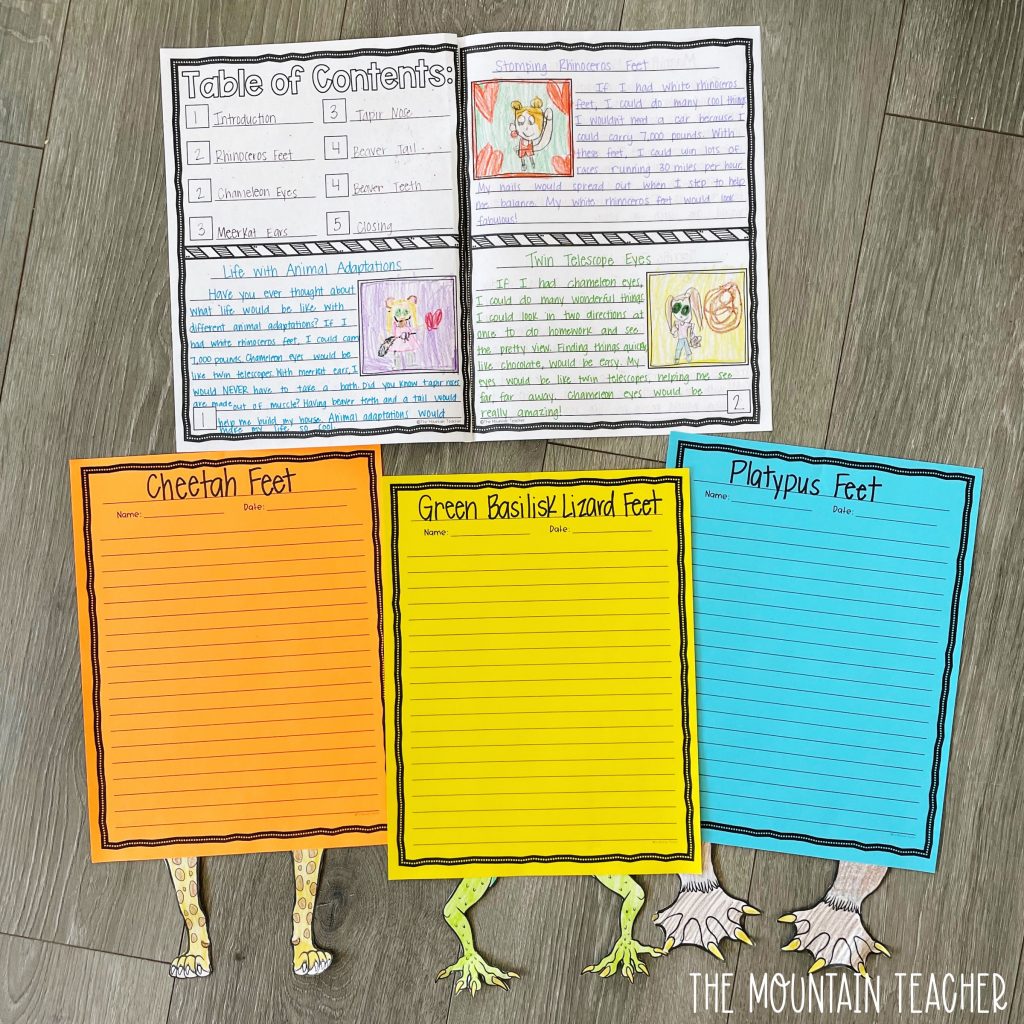
Outline:
By second grade, students should be able to write a topic sentence, 3-4 fact sentences WITH details, and a closing sentence. This means student writing should be anywhere from 5-10 sentences at least. However, many students are ready to write in paragraphs by second grade and should be encouraged to do so by adding more detail sentences to each event.
Challenges:
Students might struggle understanding the difference between an event and a detail. Talk to students about how an event is SOMETHING that happened, and details are the supporting ideas that help tell that story. Details can add dialogue, words from 5 senses, or more explicitly explain certain subjects from their writing.
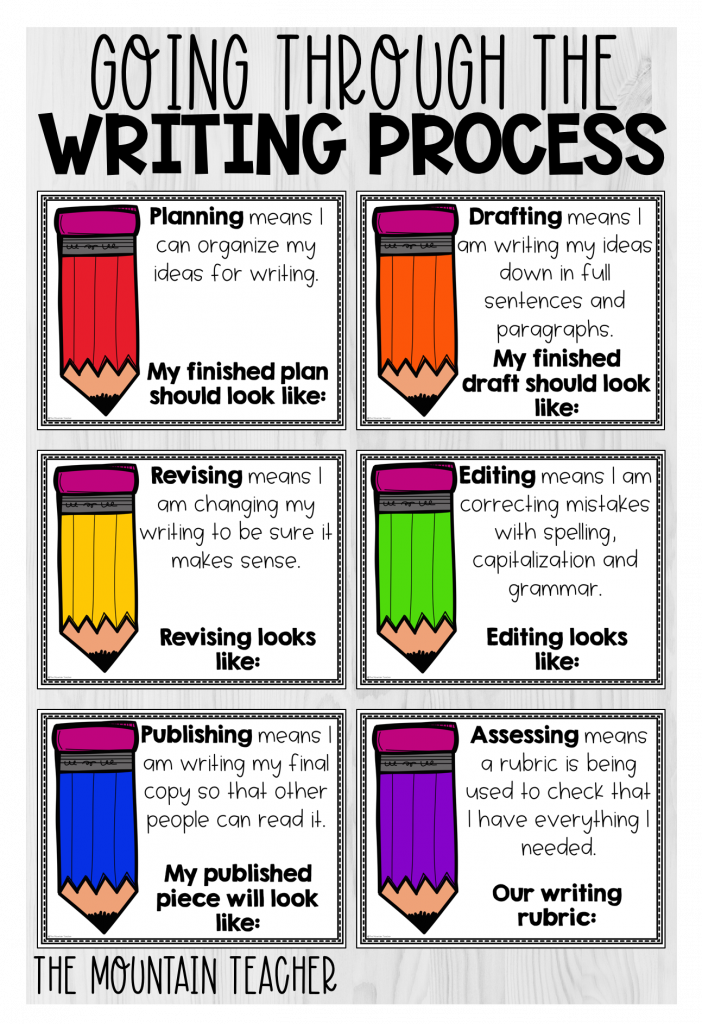
The Writing Process:
I cannot stress enough the importance of taking your students through the writing process every single week, for every single genre. This involves brainstorming/planning, drafting, revising, editing, publishing, grading and sharing.
Hook/Brainstorm:
Getting students EXCITED can be half the battle during writing. I love to tie all of my writing projects to engaging read alouds and fun topics. You can find my favorite narrative writing companions here.
It is equally important to MODEL each step of the writing process for students. After reading aloud our companion text, I typically will read aloud my model. I also will then model my own plan so students can see what I am looking for when it is their turn to write.
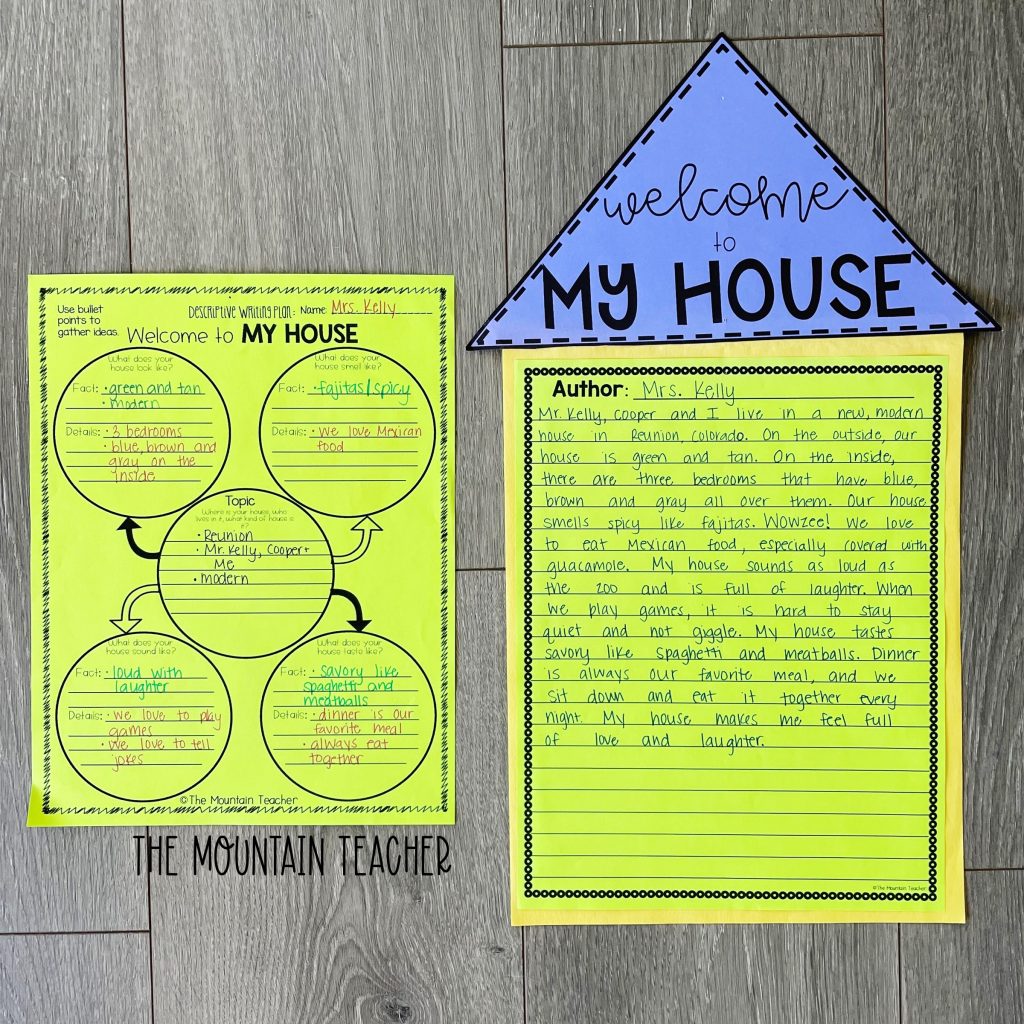
Planning:
Then, it is time for students to make a plan. Be sure not to skip this phase, it is NOT writing a full draft, but rather jotting down their ideas they are going to write about. They can use bullet points or pictures to gather their ideas, but this should NOT be done in full sentences and should not take longer than 5-10 minutes.
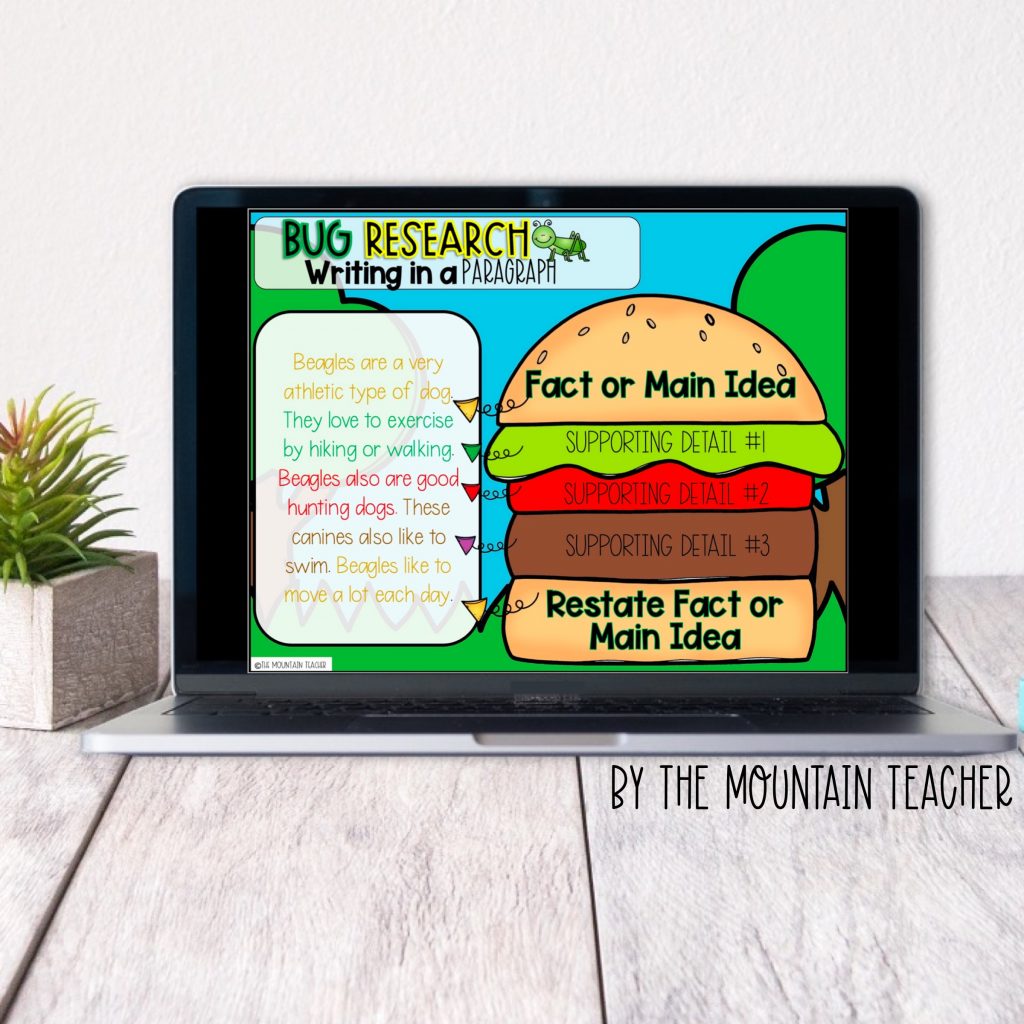
Drafting:
I like to give students two full days to draft for narrative writing. Each week, we focus on a different important skill that needs to be taught during narrative writing. Some skills we focus on are:
I like to give students two full days to draft for narrative writing. Each week, we focus on a different important skill that needs to be taught during narrative writing. Some skills we focus on are:
• Transition Words
• Topic Sentences
• Closing Sentences
• Adding Details such as adjectives, prepositions, similes, metaphors, etc.
• Adding Dialogue
• Writing with a problem and a solution
Typically, students write their topic sentence, and first two events and details one day. Then, I have them write their second two events and details, along with the closing on the second day. We focus on the skill of the week, while also reinforcing the other skills that were previously taught.
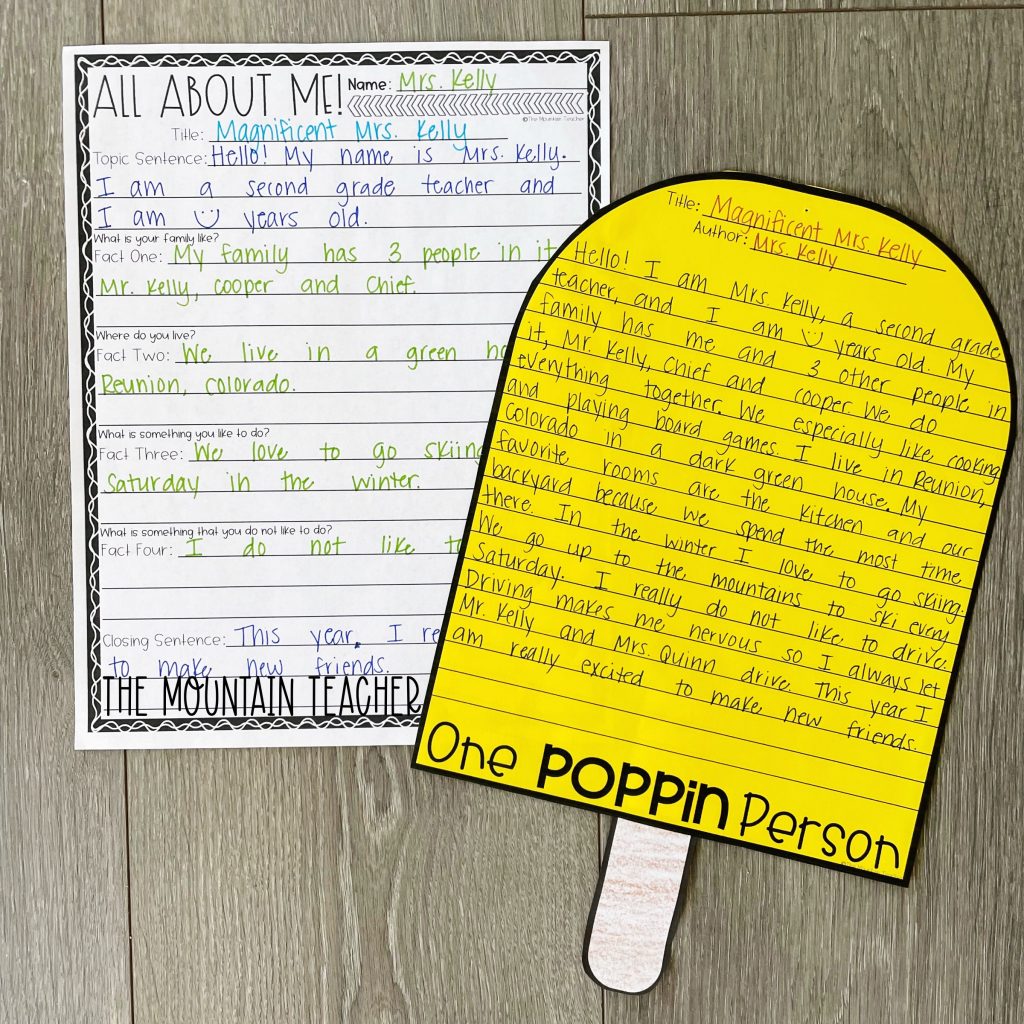
Revising/Editing:
I spend a lot of time at the beginning of the year setting up a peer editing time that is productive for students. We spend an entire day revising and editing, and I also roam the room and select certain students each week to conference with during this time.
Depending on the length of your writing block, you can either meet with all of your students or rotate through small groups of them each week.
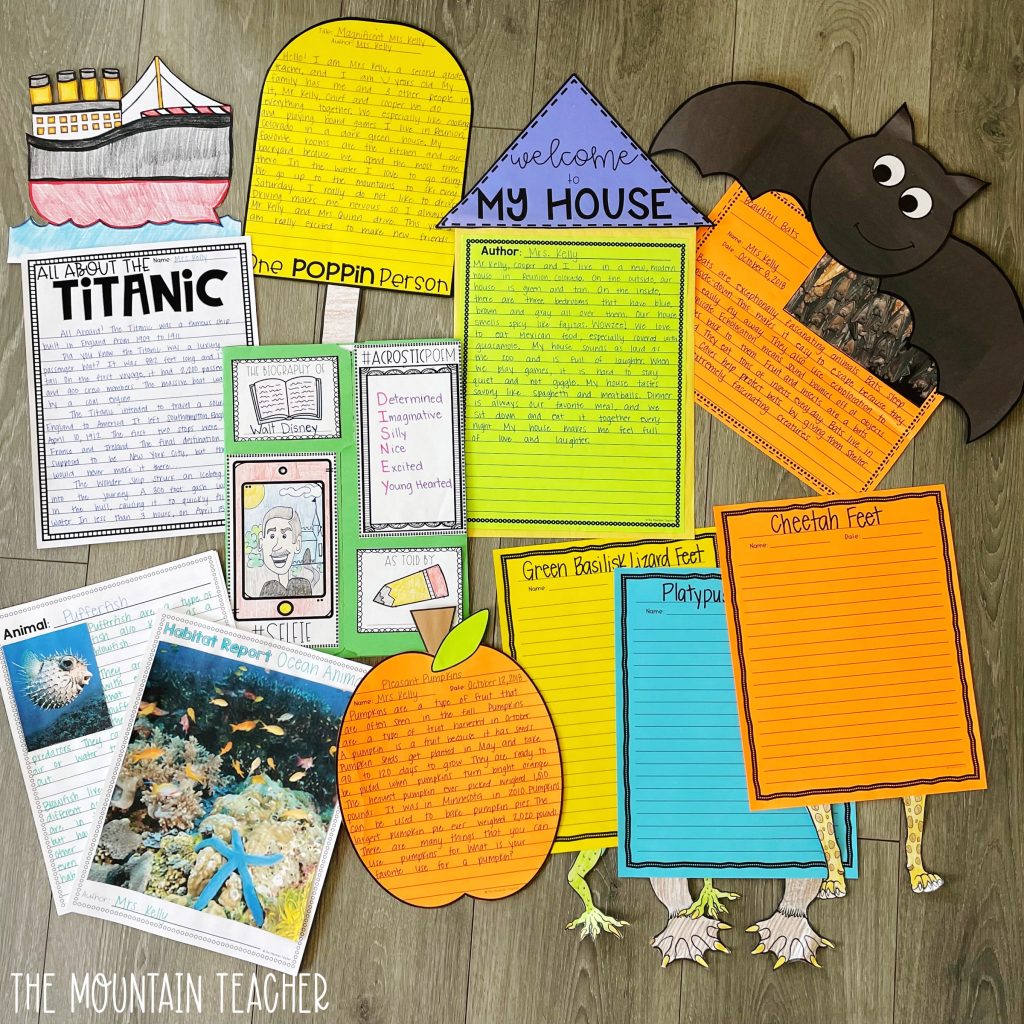
Publish, Grade, Share:
I always have students publish a piece of writing every single week. We add it to our writing portfolios that we take home at the end of the year. When students finish publishing, I have them grade themselves on the rubric. Self-assessment is such a powerful tool for students.
After they self grade, we find time to share each week. This can be partner sharing, author’s chair, sharing with buddies, recording themselves reading or more.
Resources:
What are your favorite strategies for teaching informative writing in 2nd grade? Drop some tips and tricks in the comments below!
